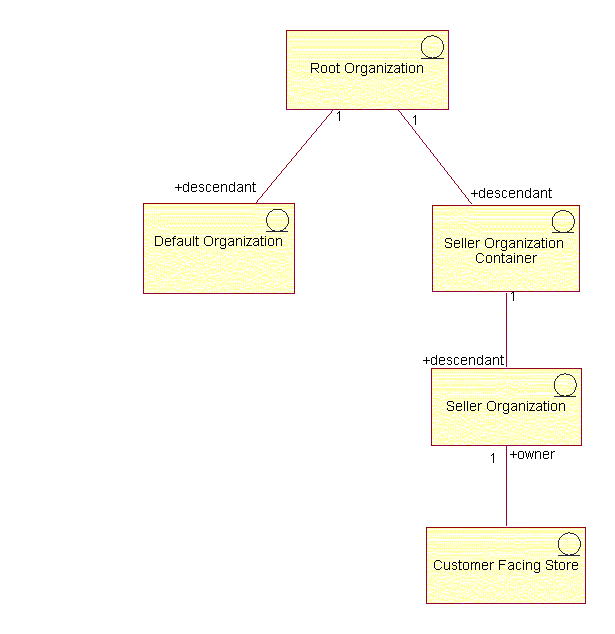Consumer direct information model
Consumer direct, one of the predefined business models in WebSphere Commerce, supports commerce transactions involving products, services, or information between businesses and consumers. Consumers typically purchase goods or services directly from a business in a consumer direct scenario.
The following diagram shows a UML representation of the consumer direct information model.

- Root organization
- All organizations in the business become descendents of the root organization. The site administrators who maintain the online site, are owned by the root.
- Default organization
- All of the business' customers are owned by the default organization. The default organization is a child of the Root Organization.
- Seller organization container
- A Seller organization container holds any number of seller organizations. By having stores under different seller organizations, you have more flexibility in terms of access control for customers as well as administrators.
- Seller organization
- A seller organization is created to own all the stores (Retailer) and the administrators who maintain the store. The administrators who maintain the store's functions (for example customer service representatives, catalog and product managers) are termed Seller administrators and are owned directly by the Seller organization.
- Customer facing store
- The storefront from which customers shop.